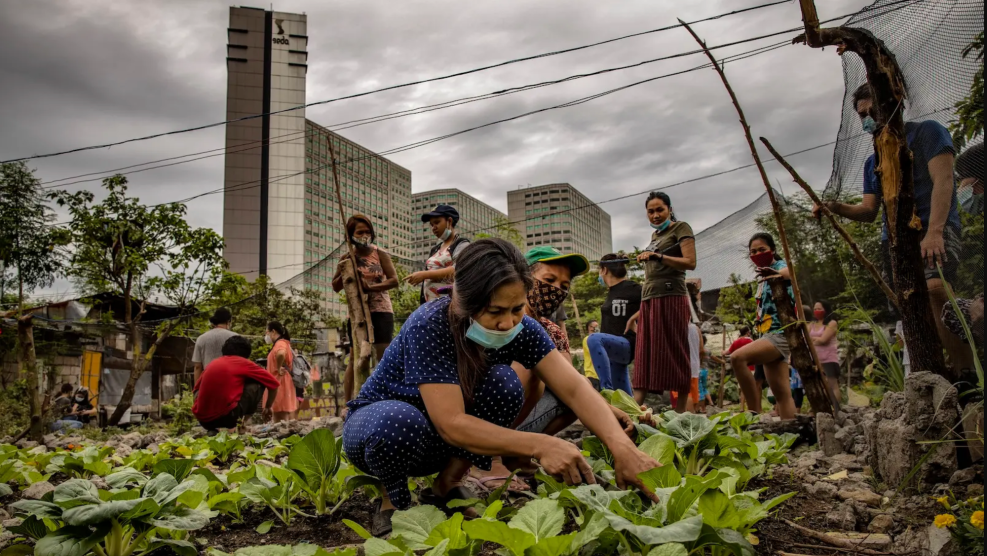Throughout 2002 and 2003, officials from the Environmental Protection Agency were conducting regular meetings and email correspondence with representatives of Syngenta, the primary manufacturer of a pesticide called atrazine, at a time when the EPA was supposed to be evaluating atrazine, according to documents obtained by the Natural Resources Defense Council.
The 40-plus meetings were all in violation of EPA policy, as was the private deal that the agency struck with Syngenta before releasing its official findings on atrazine. Under the terms of the deal, the EPA identified the 1,172 sites at highest risk from atrazine contamination and Syngenta agreed to monitor 40 of them. Apparently satisfied, the EPA went on to decline to impose any further regulations, saying only that if atrazine levels at these sites were high two years in a row, they would allow Syngenta to propose voluntary mitigation.
Between 60 and 70 million pounds of atrazine are applied annually to crops (mainly corn), golf courses and lawns. The EPA sets the limit for atrazine in drinking water at 3 parts per billion (ppb), but a 2002 study from the University of California, Berkeley showed that even amounts as low as 0.1 ppb can induce hermaphroditism in frogs. Says Tyrone Hayes, the lead professor on the study, “Some [frogs] had three ovaries and three testes, some had ovaries on one side and testes on the other, one animal even had six testes.”
Salmon are also affected. Studies on Atlantic salmon presented at recent scientific conferences showed that nine percent of fish exposed to atrazine in concentrations of 100 ppb died, and others experienced significant weight loss. Larval metabolism and growth were impacted and smolts commonly grew kidney lesions.
According to the Berkeley study, atrazine can be found in concentrations as high as 21 ppb in ground water, 102 ppb in river basins in agricultural areas, 224 ppb in some streams and up to 2,300 ppb in tailwater pits in Midwestern agricultural areas. These levels are high enough that scientists fear the pesticide could cause cancer and affect reproductive systems in humans. In Europe, governments are already on board: The European Union banned atrazine for evidence of persistent water contamination back in 2003. The pesticide can’t even be used in Switzerland, Syngenta’s home country. In the United States, meanwhile, the pesticide has already been detected in the drinking water of more than 1 million Americans at levels higher than EPA’s standard.
The fact that such a dangerous chemical can go unregulated in America has a lot to do with the way pesticide battles are fought in Washington. Political Action Committees set up by the fertilizer and pesticide industries have donated over a million dollars to lawmakers in recent years. In the 2004 election cycle alone CropLife America, a pesticide group, donated money to more than 70 candidates in 34 states. Environmental groups like the Natural Resources Defence Council, by contrast, are limited to registering their concerns in public dockets during the EPA’s evaluation process and filing the occasional lawsuit. (They have filed several in regard to atrazine.)
The results of the EPA’s evaluations, though, sometimes make little difference. The evaluation process can take years and the products being examined are still allowed to be used all the while. Jennifer Sass, a senior scientist at the NRDC says, “The review process has come to screeching halt. Pesticides on the market are considered innocent until proven guilty, so they simply stay on the market. They are being used while the EPA considers them.”
The heavy use of atrazine along the Chesapeake Bay and up and down the Mississippi River will continue while environmental groups struggle to convince the EPA to reconsider their decision on the pesticide. Since the Mississippi drains 41 percent of the continental United States, a large amount of atrazine used across the country ends up being dumped into the Gulf of Mexico. It’s one of the reasons that that once-gorgeous body of water is now home to America’s largest dead zone—an area of water the size of New Jersey where no fish, mammal or amphibian can grow or live.
















